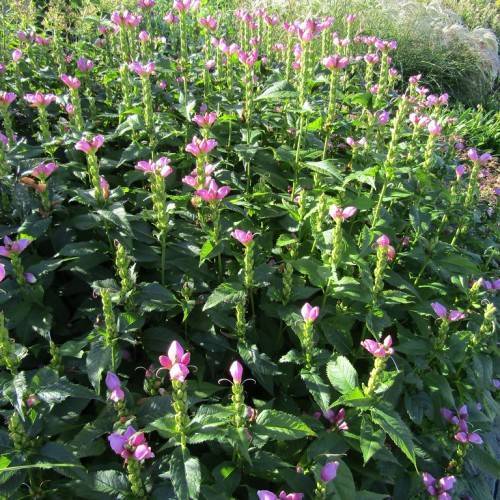
turtlehead
Chelone obliqua
Cycle:
Herbaceous Perennial
Watering:
Frequent
Hardiness Zone:
5 - 9
Flowers:
Flowers
Sun:
Full sun,part shade
Leaf:
Yes
Growth Rate:
Low
Maintenance:
Moderate
Drought Tolerant:
Yes
Salt Tolerant:
Yes
Care Level:
Medium
watering
Turtlehead (Chelone obliqua) is a moderately drought-tolerant plant that prefers regular waterings. For best results, water deeply and regularly during the summer months. Water once or twice weekly, giving thoroughly enough so that the soil is evenly moist but not soggy. In the winter months, only water when the soil is dry or beginning to dry out. Overwatering can lead to issues such as root rot, so take care to avoid it.
sunlight
Turtlehead (Chelone obliqua) needs full sun or partial shade to grow successfully. In shadier areas, the plant may not reach its full height of up to 4 feet. In full sun, the plant will thrive and will produce more blooms. For best blooming results, it's best to give turtlehead 6 to 8 hours of full sun per day. Turtlehead is quite tolerant of drought and humidity, and it's ideal to keep the soil consistently moist.
pruning
Pruning your Turtlehead (Chelone obliqua) should begin soon after it is done blooming; usually for our region this begins in early fall. Pruning to shape and tidy the plant should include trimming away any stems that are leggy or the flower heads that have finished blooming. Pruning too much can reduce flowering in the coming season so it is best not to take off more than 30%. However, complete removal of dead or discolored stems can be helpful in keeping the overall shape in addition to promoting new buds.
